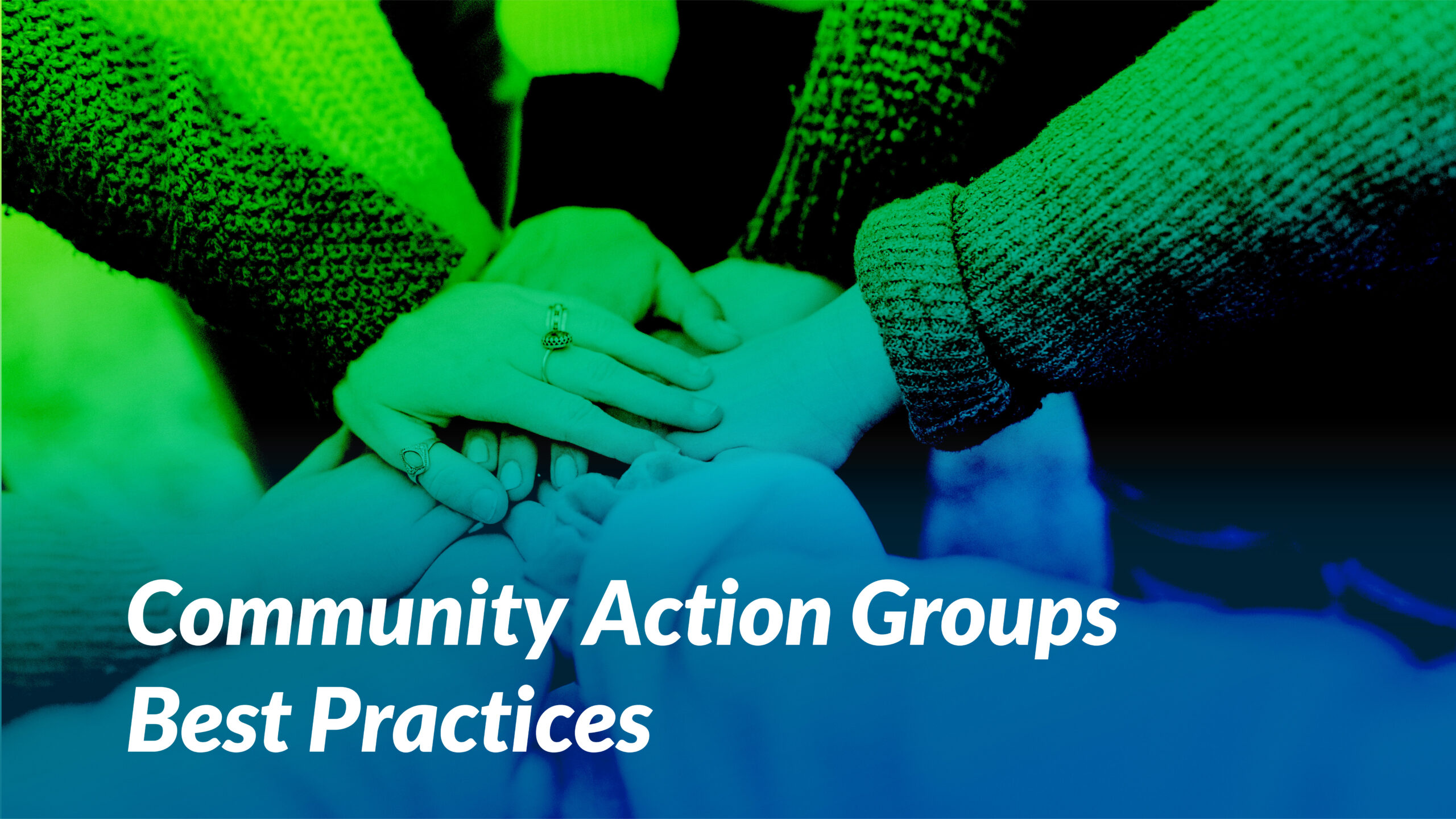Encouraging people in your community to read the book and related sources of information and arranging for speakers will hopefully generate much interest in community and economic development and “prime the pump” for the next step of forming preliminary community action groups. We say preliminary because as the community and economic development process begins, “action” groups may be simply interested citizens getting together to identify and have initial conversations about issues of concern. However, as mentioned in (2) below, certain topics or issues can be identified early on even before the community building process gets into full gear with visioning, community analysis, customizing the roadmap to prosperity and other activities covered in later chapters.
A word of caution (really, advice) for forming community action groups: be transparent and inclusive and avoid “turf” issues. Most communities have public or private agencies or organizations whose missions include community and economic development directly or indirectly. They should be involved in community initiatives covering their subject areas. Before proceeding with the steps below, you should be aware of these organizations and include them for two reasons:
- Using their expertise and contacts to help form community action groups as mentioned in 1b below
- Avoiding feelings that community action groups have left them out.
The most obvious existing organizations are frequently public or private economic development authorities, chambers of commerce or related agencies or organizations. Many communities also have departments or organizations dealing with issues such as workforce development or new business start-up assistance. For infrastructure and public service issues, the appropriate municipal departments should be involved.
You might be asking yourself the question “if there are already municipal departments or organizations dealing with the community and economic development issues I am interested in, why shouldn’t I just let them do their jobs?” The answer is simple: there is strength in numbers. Public interest in issues can often encourage departments or organizations to step up their efforts, and citizens can work cooperatively with departments of organizations for better results.
Each community is unique and no one size fits all, but here are some suggested steps for forming community action groups.
 1. Identify leaders to shepherd the process. Once awareness and interest in building community prosperity has been generated, residents will ask “what’s next?” At this point the journey to prosperity is just beginning, and the road ahead contains many community and economic tasks that should be done as described in the book. Leaders must be found to help guide the journey. But beware – leadership in this case is not “here’s how we’re going to do it, follow me.” That philosophy of leadership in anathema to community and economic development. Instead, leaders on the road to prosperity are facilitators and organizers, constantly seeking broad input and following the paths set forth in the book and other sources for community building. Leaders for community building can come from many places:
1. Identify leaders to shepherd the process. Once awareness and interest in building community prosperity has been generated, residents will ask “what’s next?” At this point the journey to prosperity is just beginning, and the road ahead contains many community and economic tasks that should be done as described in the book. Leaders must be found to help guide the journey. But beware – leadership in this case is not “here’s how we’re going to do it, follow me.” That philosophy of leadership in anathema to community and economic development. Instead, leaders on the road to prosperity are facilitators and organizers, constantly seeking broad input and following the paths set forth in the book and other sources for community building. Leaders for community building can come from many places:
-
-
-
- Elected officials already in a position of leadership (hopefully a non-partisan coalition of elected officials can lead the process to avoid politicalization).
- Existing community and economic development organizations as described above.
- Concerned citizens from all walks of life. Community and economic development is usually most successful when done from the grassroots level. Local board members, community volunteers, and any and all residents should be encouraged to participate in the process.
- Trusted, neutral community organizations such as school boards, churches, civic clubs and related organizations If such organizations do not already exist then consideration should be given to creating a non-profit organization to spearhead the community building process. The authors have worked with many such organizations. In one project, the president of the local community college was selected to lead the task force created to guide the community building process. The college and its president were asked to assume that role because they were widely considered to be non-partisan and were willing to donate time and resources to the process.
-
-
 2. Form initial action groups. As discussed above, the initial “action” groups may be just citizens discussing the concepts of community and economic development in the book and how they apply to their community.
2. Form initial action groups. As discussed above, the initial “action” groups may be just citizens discussing the concepts of community and economic development in the book and how they apply to their community.
-
-
-
- At some point early in the community and economic development process, a steering committee must be created. The steering committee leads and orchestrates the community and economic development process. Members typically include key elected officials, representatives from the business sector, community and economic development professionals, and other key stakeholders. It should be large enough to include representatives from leading stakeholder groups, yet small enough to function effectively. The number of members is often between 9 and, say, 15. An Executive Committee can be formed from among the steering committee members to streamline operations.
- More detailed identification and prioritization of key community issues and opportunities come later in the community and economic development process. However, it is certainly possible early on to organize initial action groups around key components of the community and economic development process identified in the book such as assessing community prosperity (Chapter 2), visioning (Chaps 3 and 4), or community assessment (Chapters 2 and 3). Also, other topics that the community wants to focus on or finds interesting from the book can be identified (e.g. community enterprise or historical preservation). It should be kept in mind, however, that the initial topics or issues for action groups may change as the visioning and community assessment processes begin.
-
-
 3. Identify people to participate in the action groups. Seek volunteers according to their interests and also their expertise in particular areas (e.g. local economists or business people for assessing the current prosperity of the community as discussed in Chapter 2).
3. Identify people to participate in the action groups. Seek volunteers according to their interests and also their expertise in particular areas (e.g. local economists or business people for assessing the current prosperity of the community as discussed in Chapter 2).
![2021 Prosperous Places Logo [TM]](https://www.prosperousplaces.org/wp-content/uploads/2021/02/20210205_JI_PPTM-Logo.png)



